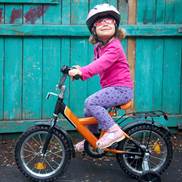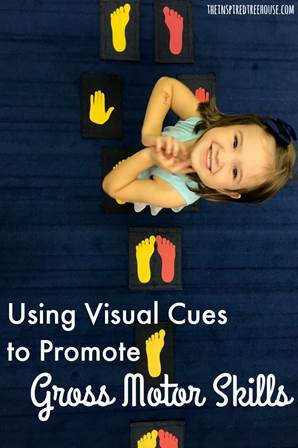Coordination

Bilateral Coordination
Bilateral Coordination is the ability to use both sides of the body together in a coordinated way. Children with poor bilateral coordination/integration may struggle with gross motor games or with fine motor tasks that require both hands to work together. Examples include jumping, skipping, cutting with scissors, using a knife and fork, and tying shoelaces.
The following are activities that you can be done at home to help your child with Bilateral Coordination skills:
1. Jumping Jacks – Encourage your child to complete jumping jacks; but start out using simple movements. Begin with your child jumping out to the side and return to the middle. After they are able to complete successfully, have them work on moving their arms out to the side and clapping their hands over their head. When they are able to complete this using appropriate movements, try having them just jump and clap over their head; if they are successful, then work on trying to coordinate jumping with their legs out to the side simultaneously clapping over their head to complete the “jumping jack”.
2. Complete cross lateral movements – bring the knee up to waist height then touch with the opposite hand. Repeat with the other knee and hand.
3. Jumping skills – draw a line on the ground and have your child jump over with both feet. If they are successful, use a jump rope that is positioned off the ground 2-3 inches and have your child jump over. You can also progress to a low step (6 inches) and have your child jump down with both feet.
Hand-Eye Coordination
Hand-eye coordination is the ability of the eyes to guide the hand to complete a movement activity or skill. For example, catching or hitting a ball are common activities that are associated with this type of coordination. However, being able to kick a ball, rolling or stationary, is also an example of being able to complete a motor activity using coordinated movement patterns with accurate timing (also known as Foot-eye coordination). Parents should be aware that if their child has difficulty completing hand-eye coordination skills, that the ability to complete handwriting might be also affected. Children need eye-hand coordination to guide their pencil between the lines and ensure the ability to make letters don’t go over the lines or touch each other. Hand-eye coordination also forms the foundation for visual-motor integration, which helps kids learn to form letters and develop flowing handwriting
The following are activities that can be done at home to help with coordination activities:
- Roll a ball back and forth with your child. Try to avoid always rolling the ball directly to your child; they need to be able to reach to get the ball in a timely manner and return roll to you.
- Play ball for catch/throw skills: start with a larger ball and encourage the child to place his hands in front of them and out to side to try to catch with their hands. Many children try to catch with the arms straight out and then pull the ball toward them (trap catch); but encourage use of hands for catching skills. As the child makes progress, try using a smaller ball and vary how far away you stand and the speed of which you throw so the child has to vary their body movements to be able to catch the ball. Follow the same procedures when throwing; but encourage your child to throw with one hand (dominant hand) and to use an overhand throw, underhand throw and eventually a mature step throw pattern.
- Target throwing- It’s important for your child to determine the amount of force needed to return throw if you stand at different spots. For example, stand 3 feet away; then stand 8 feet away and encourage them to throw the ball to you using appropriate speed/force. Also work on throwing objects in buckets/baskets/clothesbaskets so they can work on their own ability to understand the force/distance relationship necessary for throwing toward a target.
- Bean bag games – Use a bean bag and toss back and forth; then progress to having your child throw the bean bag up and then try to catch. You can also use a HopScotch board (or one you draw with outdoor chalk) and have them throw a bean bag to different numbers.
- Balloon Batting Games: Blow up a balloon and bat the ball back and forth counting how many times that you can hit it before it falls to the ground. You can also use paper plates taped to a paint stirrer to bat the ball.
You can also find many activities for coordination skills on You Tube. There are many excellent and cheap activities which you can do at home with your child.
Motor Planning (Praxia)
Motor Planning happens with everything we do! From walking around objects in our path and climbing on playground equipment to picking up items, to aiming and throwing, drawing, writing, getting dressed and using buttons/zippers, and washing our hands and even brushing our teeth. Motor Planning problem solving and moving over, under, and around requires fine motor and gross motor skills and planning to plan out, organize, and carry out an action. We must organize incoming information, including sensory input, and integrate that information into our plan. We need to determine if a ball is heavy or light to pick up and hold it without dropping it.
Motor Planning requires observing and understanding the task (ideation), planning out an action in response to the task (organization), and the act of carrying out the task (execution). A difficulty with any of these areas will lead to dyspraxia in many skill areas. Dyspraxia can be a result of poor sensory integration, visual difficulties, fine motor and gross motor coordination and ability, neural processing, and many other areas.
Difficulty With Motor Planning
If a child has difficulties with planning and sequencing they might:
- Have difficulty learning new motor tasks (requires more practice than their peers).
- Appear clumsy or uncoordinated, poor eye-hand coordination
- Be unable to perform the same skills as their peers (e.g. catch, kick, hop and jump).
- Be unable to follow multi-step instructions to complete a physical task (e.g. obstacle course).
- Be generally ‘disorganized’.
- Be late in reaching developmental milestones (i.e. sit, crawl, walk, run and hop).
- Move stiffly and lacks fluid body movement or alternatively looks awkward and appears clumsy.
- Struggle to get themselves ready on time.
- Have difficulty gathering and collecting materials for school or play (e.g. getting out materials such as the right book for a classroom activity).
- Appear lazy and does not complete work (when in fact they may not know how to start the task).
- Have difficulty getting thoughts down on paper.
- Be unable to plan and correctly sequence events or steps in a process (e.g. step forward before throwing).
- Fail to perform movement safely (e.g. climbing).
- Need to put in more effort than their peers to complete a task.
- Have difficulty knowing where their body is in relation to objects and people and frequently falls, trips, and/or bumps into obstacles.
- Drawing and pencil skills lacking in a skillful outcome.
- Activities of daily living (e.g. dressing independently, holding a spoon/fork, self-feeding, toileting).
- Chewing and swallowing food.
- Sensory processing (responding appropriately to the environment).
- Articulation of sounds.
- Limited play repertoire
- Self-esteem

Click here to find out more about visual cues to promote gross motor skills.